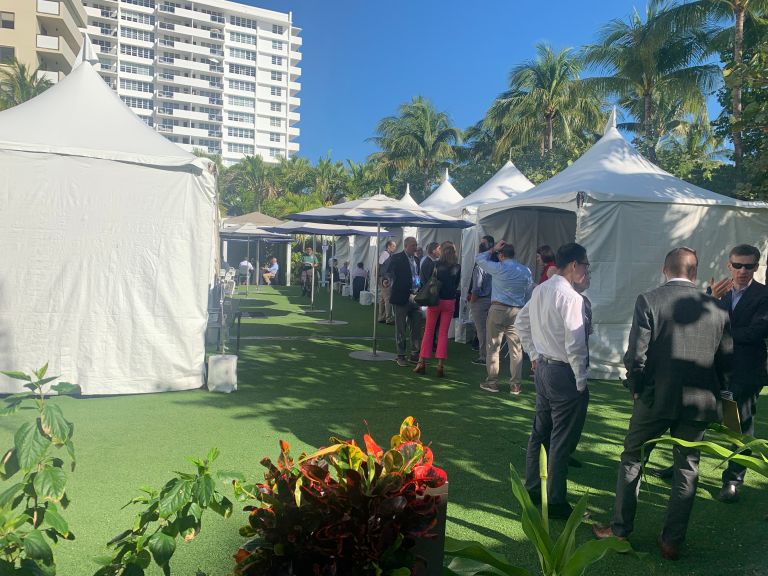Market Dislocation Top of Mind – Commercial Observer
As the nation’s top commercial real estate financiers gather once again for the CRE Finance Council’s annual Miami conference, there are some dark clouds on the horizon for the industry, permeating the South Beach sun.
The CREFC conference, which kicked off with a beach party Sunday evening at the Loews Miami Beach Hotel beachfront, has returned to more normal conditions after COVID’s Omicron threw its own thunderclap at the 2022 event, resulting in lower attendance figures and muted festivities.
While there’s much excitement this year for a return to a pre-pandemic CREFC atmosphere, challenging market conditions are top of mind for attendees as the industry grapples with unknowns — how much interest rates will rise in 2023, and the future vibrancy of the office sector, to name a couple. Transaction and lending activity has been largely in a holding pattern of late, with some lenders stepping back altogether in late 2022 while the market irons out economic question marks.
“The focus of the conference at the moment is more around how you address the challenges for the current book and how you protect existing investments,” Bill Sexton, CEO of Trimont Real Estate Advisors, told Commercial Observer. “There is also an eye on how we invest into markets as asset values come back and we start to get some sort of price discovery and we start to close the bid-ask spread, which is pretty wide right now.”
Sexton said there are likely potential lending opportunities in the latter half of 2023 for distressed office and retail assets, but at the moment “it is a bit like catching a falling knife.”
The Fed raised interest rates seven times in 2022 bringing the federal funds rate between 4.25 percent and 4.5 percent — its highest level since December 2007, and a stark contrast from the near-zero borrowing conditions that existed earlier in the year. Jerome Powell, chair of the Federal Reserve, indicated last month that rates will continue to climb in 2023 in an effort to meet the central bank’s inflation target of 2 percent.
Warren de Haan, managing partner and co-CEO of Acore Capital, said the real wild card is how the banks will respond to dislocation in the CRE market with increased regulation, which has already led to liquidity problems.
“Now, a lot of assets are staying on the balance sheet, but loans that were going to get refinanced from a maturity perspective are not getting refinanced,” de Haan said. “The banks’ balance sheets are ballooning.”
Dylan Kane, managing director in Colliers’ New York capital markets group, said that while deal activity slowed in late 2022 due to uncertainty with interest rates, there is some hope that the Federal Reserve is near the top of its hawkish strategy to combat inflationary pressures. In response to the market environment, Kane is focusing heavily on brokering construction deals in the multifamily and industrial sectors along with value-added acquisition loans that aren’t quite as sensitive to where interest rates are currently.
“They’re not going to deliver that finished product for another 24 months or so, so today’s rates aren’t really relevant to the success of the project,” Kane said. “It’s really more how you view it two years from now.”
Mark Fogel, CEO of Acres Capital, said that while many lenders are sitting on the sidelines to see where the Fed ends up with interest rates, there are plenty of opportunities for those with capital available to deploy. Acres has been particularly active lately with construction loans on multifamily assets along with self-storage, hospitality and student-housing properties.
“Once the market recognizes that the Fed is going to hold steady for a while, you’re going to see activity pick up,” Fogel said. “We just don’t know how bad inflation really is. We don’t know how much more they have to do to tame it, and it’s really hard to invest in anything until you know that.”
Andrew Coen can be reached at [email protected] and Emily Fu can be reached at [email protected].



